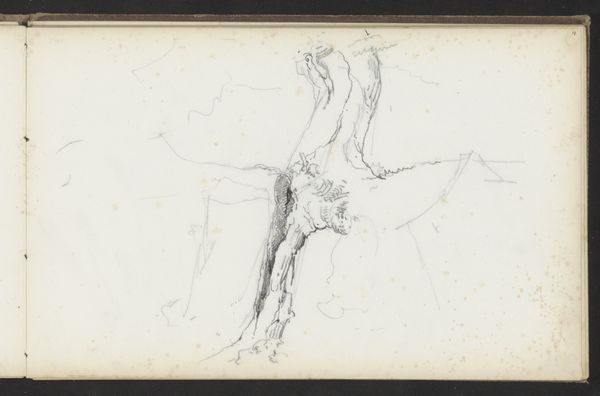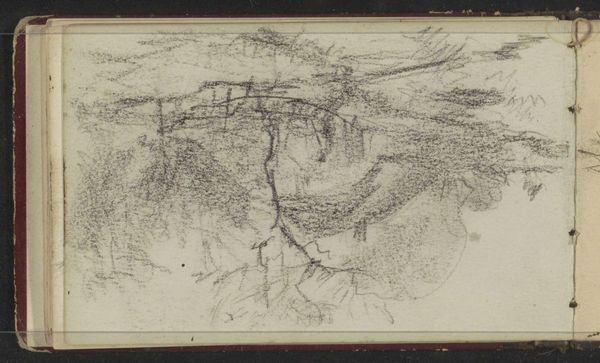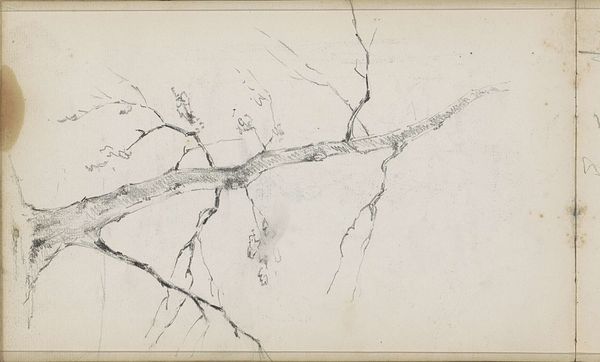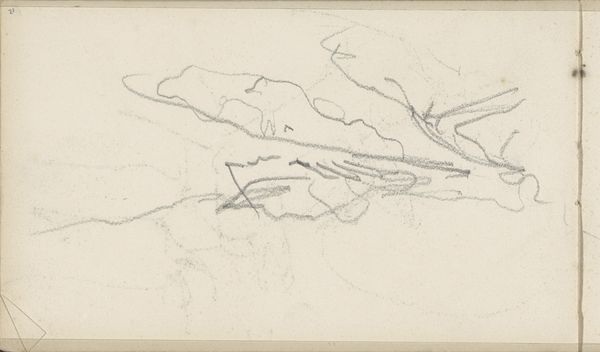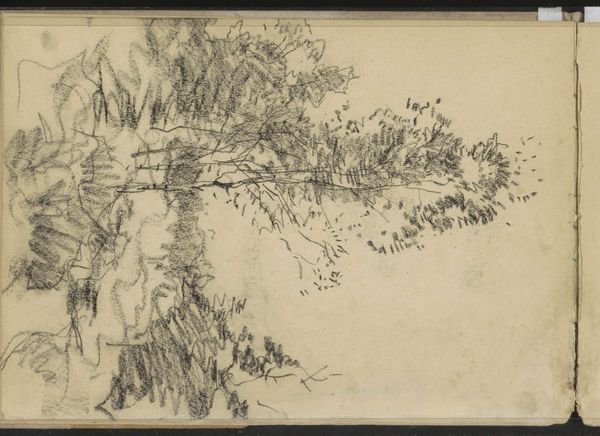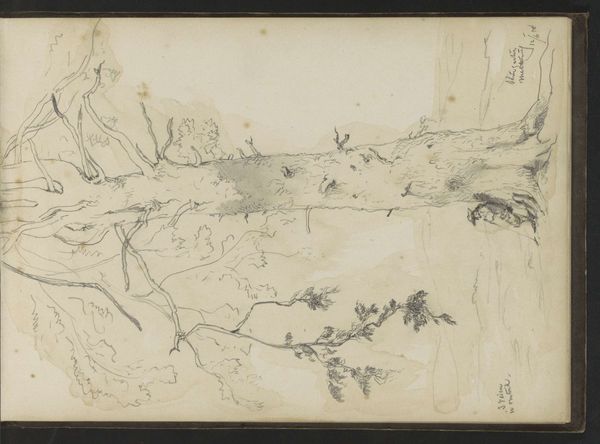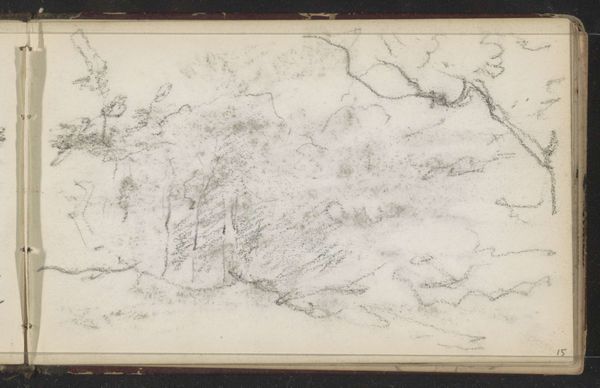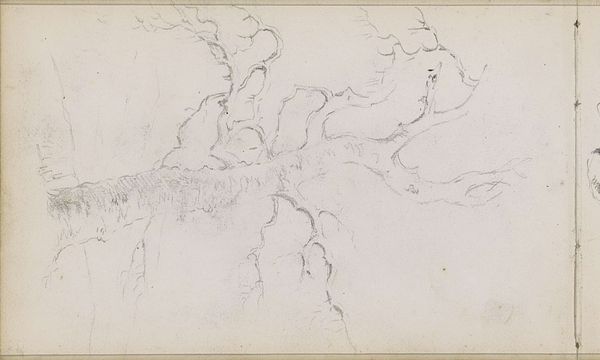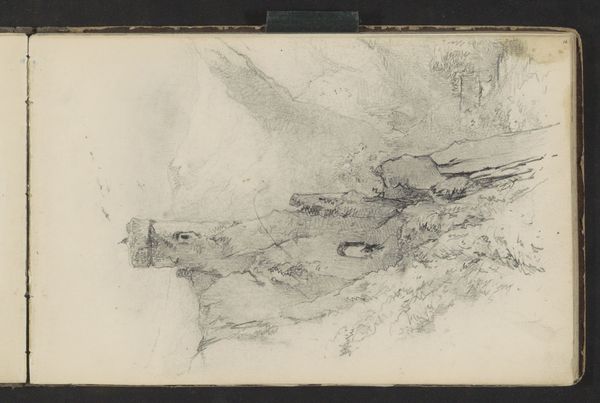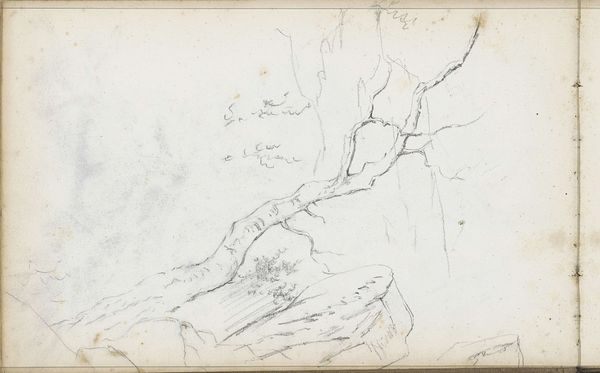
drawing, pencil
#
tree
#
drawing
#
amateur sketch
#
light pencil work
#
pen sketch
#
sketch book
#
incomplete sketchy
#
landscape
#
personal sketchbook
#
ink drawing experimentation
#
pen-ink sketch
#
pencil
#
line
#
sketchbook drawing
#
sketchbook art
Copyright: Rijks Museum: Open Domain
Curator: Here we have Ferdinand Oldewelt's drawing, "Boom," created sometime between 1904 and 1912 using pencil and what appears to be ink. The energy in this sketch is remarkable, almost vibrating off the page. Editor: Yes, I noticed that too! It's simple, yet very effective at showing movement and the gnarled texture of the tree. How do you interpret the artist’s focus here, the bare minimum that is needed to create the drawing? Curator: Exactly. Note how the line dictates form; hatching defines shadow, depth, and ultimately volume, especially within the main branch bisecting the composition. Consider the strategic use of empty space, or negative space; is that an emptiness or is it itself an element defining mass? Editor: I see what you mean! So, is the sketch relying entirely on its internal relationships of lines, shapes, and shading rather than aiming to represent the real thing? Curator: Precisely. The represented “tree” acts as a vehicle through which the artist explores formal concerns – the interplay of line, texture created through hatching, the very articulation of visual space. Editor: It’s interesting how a simple drawing can reveal such complexities about form. It definitely makes me see sketches, not as unfinished pieces, but as focused explorations of the relationship between line and space. Curator: Indeed. Close observation of seemingly simple artworks often uncovers a rich, rewarding and formally intricate visual language.
Comments
No comments
Be the first to comment and join the conversation on the ultimate creative platform.

